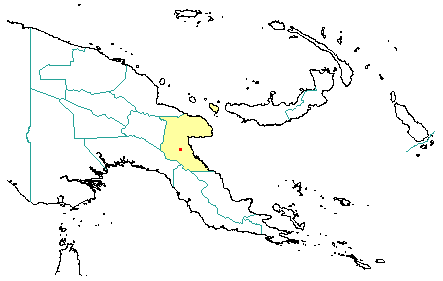
in PNGplants database
PNGTreesKey – Pinus merkusii Jungh & de Vriese. |
Barry Conn (NSW) & Kipiro Damas (LAE).
Guide to trees of Papua New Guinea
Copyright held by the authors, National Herbarium of New South Wales, and Papua New Guinea National Herbarium
in de Vriese, Plantae Novae et Minus Cognitae Indiae Batavae Orientalis 5 (1845) Fig. 2.
Family: Pinaceae
Conifer
Timber Group: Softwood or Plantation species Tradename: Tenaserrim Pine
Field Characters: Large canopy tree (20-35 m high - usually smaller in PNG); Bole cylindrical (c. 25 cm diam.); crooked or straight (branching from near base); buttresses buttresses absent; spines spines absent; aerial roots aerial roots absent; stilt roots stilt roots absent; Bark grey or rarely brown, rough (deeply furrowed), fissured or furrowed cork (forming a reticulate pattern); Subrhytidome (under-bark) dark brown; less than 25 mm thick (12 mm thick), 12.0 (c.); bark blaze with two layers (outer layer of dead cork); strongly aromatic; resinous/linament-like or pine-like; outer blaze red or brown, with stripes (layers of cork), corky; inner blaze white, markings absent, fibrous; bark exudate (sap) present, yellow or colourless, not readily flowing (spotty) (flowing after some time), colour not changing on exposure to air (except when hardening then turning white/milky to pale yellow), sticky; terminal buds not enclosed by leaves.
Indumentum: Complex hairs absent; stinging hairs absent; mature twig indumentum (hairs) absent.
Leaves: Leaves clustered at end of branches (young shoots usually with 2 or more whorls of branches), whorled (with more than two leaves at one node of a branchlet), 2, simple (a leaf composed of a single blade) (with persistent basal sheath 1-2 cm long); petiole absent; leaves equally broad throughout much of length (linear), 20.0-38.0 cm, 0.2 cm; symmetric, finely crenate, not dissected or lobed, obtuse, venation parallel-veined, secondary veins closed, not prominent, but visible, intramarginal veins absent (resin canals in median position - view in cross-section); leaves lower surface green (glossy) or yellow (greenish (convex), upper surface green (glossy) or yellow (greenish (upper, hence inner surface 2-sided; outer surface concave), indumentum (hairs) absent; absent; domatia absent; stipules absent.
Flowers: Inflorescence terminal or axillary, flowers on an unbranched axis, flowers arranged in a cone (strobilus) (male flowers in narrowly cylindrical strobili, strobili in clusters around base of young shoots); flowers unisexual, unisexual with male and female flowers on the same plant, not stalked, flowers with one plane of symmetry; perianth absent; stamens 1, absent, free of each other; ovary superior, carpels separate (when more than one), locules 2; styles absent.
Fruits: Infrutescence arranged on unbranched axis, arrangement of fruits present (narrowly cylindrical, often curved, either occurring singly or in pairs), cone 60.0-90.0 mm, 30.0 (c.) mm, green or brown; seeds 100 (2 per scale), to about 5 mm long, winged (well-developed), narrow (longer than wide).
Distribution: Morobe (Plantation species).
 | Botanical records in PNGplants database |